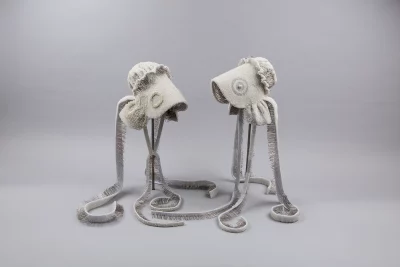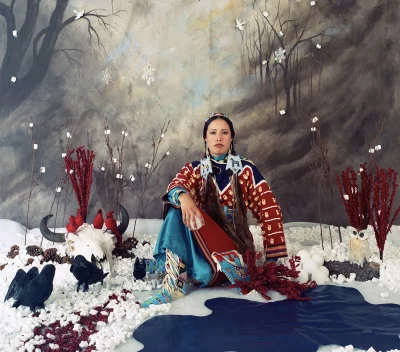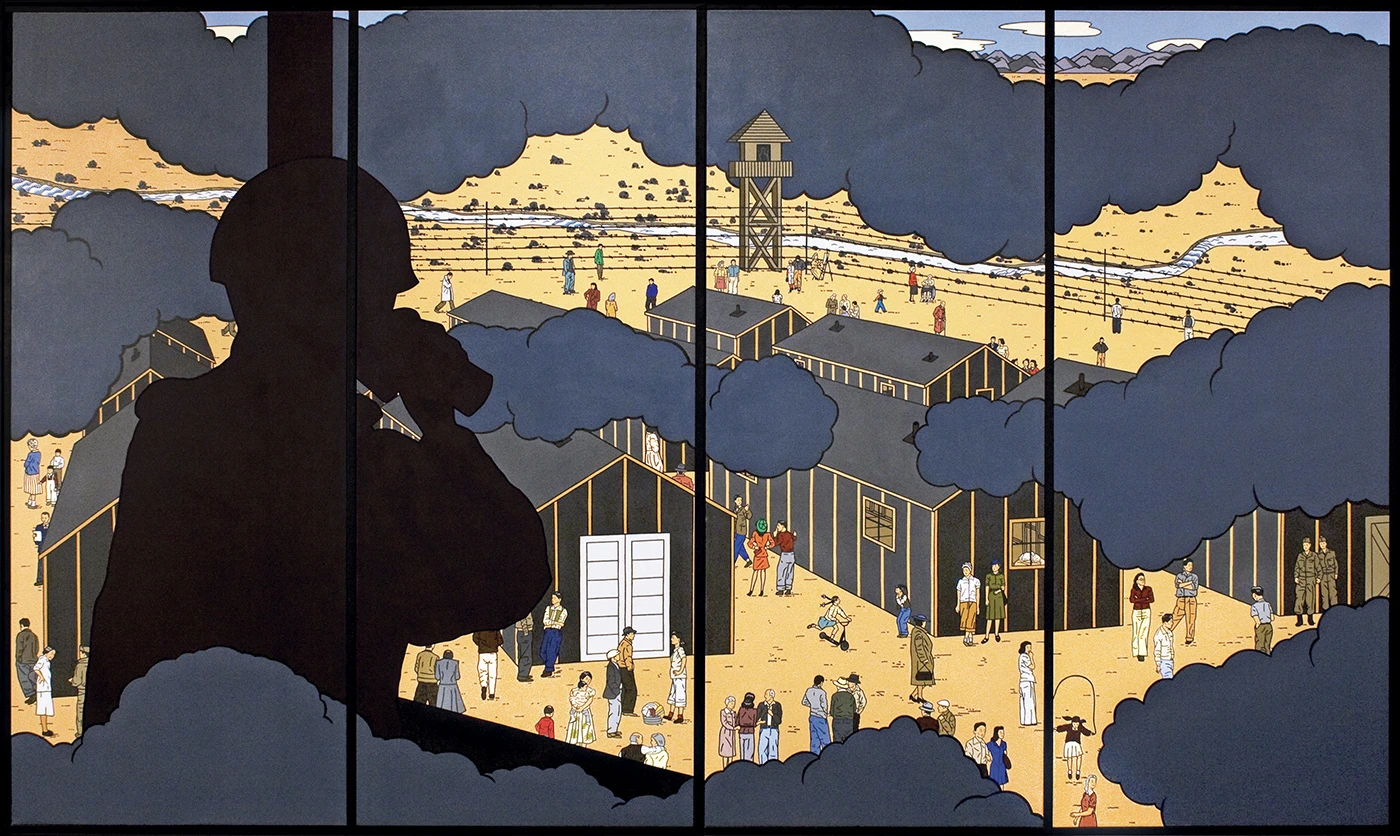Many Wests: The Artists Challenging An American Mythology
Art
48 photographs cover a wall in Utah Museum of Fine Arts (UMFA), making up the Many Wests: Artists Shape an American Idea exhibit. Each image features a striking, silver obelisk in a familiar western landscape—deep in an old-growth forest, in the grass beside a roaring freeway or overlooking an expanse of sagebrush. They denote a long-forgotten border, the lands south of which, in 1821, the United States ceded to Mexico “forever.” Forever, it turned out, lasted 27 years.

The piece, “DeLIMITations,” was created by Marcos Ramírez ERRE from Mexico and David Taylor from the United States. The pair traveled the length of the historic border, placing and photographing the markers. As the modern border faces sustained conflict, the piece provides a timely reminder of the subjectivity of these lines and how what we know as the American West belonged to Mexico in the not-so-distant past.
Connecting past to present is one of Many Wests’ goals. The exhibition challenges the mythology of the American west by centering overlooked and marginalized perspectives. “We talk about the West as … this expansive landscape. Open plains, enormous mountain lakes evoking ideas about freedom, possibility and opportunity,” says UMFA senior curator Alisa McCusker. “But for many, the West was a place of confinement; in some cases, even imprisonment.”
Many Wests depicts the diversity of experiences that has always existed. It does so in varied forms: photography, printmaking, even machete-chopped bits of Western films. Almost 50 artists are featured in the final exhibit, representing Black, Indigenous, Asian-American, Latinx, female and LGBTQ+ perspectives.
“We talk about the West as … this expansive landscape. Open plains, enormous mountain lakes evoking ideas about freedom, possibility and opportunity.”
The project began as a collaboration between Art Bridges and the Terra Foundation for American Art. It resulted in a partnership between the Smithsonian American Art Museum and a consortium of Western museums, including UMFA. Some pieces, such as “DeLIMITations Portfolio,” belong to UMFA’s permanent collection while others are on loan from museums in Idaho, Washington and Oregon. The exhibition is divided into three categories: Caretakers, Memory Makers and Boundary Breakers, each role essential to the survival of marginalized communities in the West.
Caretakers represents a commitment to honoring the past and shaping future generations. One featured artist is Awa Tsireh, who was born San Ildefonso Pueblo in New Mexico in 1898. His works, created during an era of forced assimilation, preserve sacred traditions of the Pueblo while protecting the secrecy reserved for the initiated. “Native Americans were moved west from their ancestral homelands, put in reservation systems, kept in certain locations,” says McCusker. “Caretakers has a lot to do with preservation and survivalist activism.”

Memory Makers recovers the stories that were lost in the prevailing narrative of the West. Jacob Lawrence’s “The Builders” brings to life his experience as a Black migrant working with the WPA (Works Progress Administration) and New Deal programs. Christina Fernandez’s “Maria’s Great Expedition” tells the story of her great-grandmother’s immigration to the United States from Mexico in a display style often used to tell stories of white expansionists. Subverting that form, she writes of a parallel history that has long been omitted.
“A lot of these [pieces] are about gender roles, they’re about family, they’re about identity. These are things that we can relate to no matter who we are.”
Boundary Breakers pushes conversation and advances different ideas through experimentation and symbology in the featured art. Wendy Maruyama’s “Minidoka” consists of thousands of paper tags representing the Japanese-Americans incarcerated during World War II in Idaho’s Camp Minidoka. The ceiling-high sculpture is just one piece from her series The Tag Project, in which she created one sculpture for each of the internment camps in the United States.
McCusker stresses that all the works defy categorization. “A lot of these [pieces] are about gender roles, they’re about family, they’re about identity. These are things that we can relate to no matter who we are,” says McCusker. “Where the hope lies with me is in the idea that all of these stories are reminders of similarities more than they are of differences.”
Many Wests is on display at UMFA through June 11. To learn more, check out umfa.utah.edu/many-wests.
Read more about UMFA exhibits:
A Space in Time: Space Maker Reflects the Ties Between Place and Identity
Using Storytelling To Protect Salt Lake Valley’s Waterways: The Confluence Exhibit at UMFA
